100 voice impressions in under 5 minutes.
Tuesday, February 20, 2007
The Man of 100 Voices
Posted by Brian Borden at 9:56 PM 0 comments
Labels: Humorous
X-trials Bible Study
This past Thursday was the first of my 13 week Bible Study class. The study is called X-trials and is based on the sermon series by Ed Young. We meet each Thursday at Starbucks. It was quite a class. It is one of the first that our church is having out in the public instead of at the church or in a home. We had 12 people in the class which is quite large and almost too large for the number of chairs that we had available at the coffee shop. As I had hoped we had several people listening to the discussion from other tables. Whether they approved or not I do not know but they were actively listening. We even had one young man pull-up a chair and join us.
We are working our way, verse by verse, through the book of James. Our first session focused on James 1:1-12. It covers God's purpose
for testing us and how we are to respond. We covered Ed Young's formula Eic2=M and how to use it in the trials of our life.
E=Evaluate
Examine the trial, identify it, and take a step-back to examine it. Look at trials through the eyes of faith. Then make a conscious decision on how God wants you to address it.
i=Information
Each trial gives us information on our strengths and weaknesses.
c=Cooperation
We must cooperate with God in these tests by relying on Him, persevering, and learning the lesson He is placing before us.
c=Conversation
Always go back to God. Talk with Him, listen to Him. Ask Him for your needs. Remember the quote from Oz Guinness
“As believers, we cannot always know why,
But can always know why we trust God,
Who knows why and that makes all the
Difference.”
M=spiritual Maturity
Doing all these things is how we grow in our faith.
Pray for our next class this Thursday and if you want a little more information on the class check out my website www.x-trials.com.
Posted by Brian Borden at 9:26 PM 0 comments
Thursday, February 08, 2007
Calvinisim, It Ain't so Bad.
Many know that I am a Calvinist. The most disheartening thing about being one is the sometime gross assumptions of non or partial Calvinist. At the Founders Ministries Blog I came across this interesting post. Apparently Dr. Danny Akin of the Southeastern Baptist Theological Seminary doesn't think all us Calvinists are the bain of the Christian world.
Sage, Courageous Counsel from Dr. Danny Akin
Dr. Danny Akin, President of Southeastern Baptist Theological Seminary, sent the following email today to the students of that school. It is full of wisdom and is an example of the kind of clear thinking and careful speaking that we desperately need in our day. I appreciate his concern for the next generation of ministers, specifically, that they would be free from some of the more egregious theological irresponsibility that characterizes so much of our contemporary scene. I applaud his conviction and willingness to speak plainly in warning and instructing his students.
A Plea For Theological Responsibility And Integrity
In recent days it has become painfully evident that many Southern Baptists do not "do theology" very well. Some are apparently ill informed and sloppy. Others trying to be cute, are bombastic and irresponsible. Despite our rhetoric to be "people of the Book, we do not know the Book very well. We do not grasp its rich theology. We are
failing, and failing miserably, to obey 2 Timothy 2:15-16: "Be diligent to present yourself approved to God, a worker who doesn't need to be ashamed, correctly teaching the word of truth. But avoid irreverent, empty speech, for this will produce an even greater measure of godlessness."
I want our students to do better. I want you to do theology well. I want you to be clear and careful thinkers, gracious and competent teachers. I want you to be able to articulate a biblically balanced theology with conviction as well as charity. I want our Lord to give you the wisdom of knowing which theological hills are worth dying on, and which ones brothers and sisters in Christ can agreeably disagree, and yet love each other and work with each other in building the Church of the Lord Jesus Christ and reaching the nations with the gospel.
If you are wondering what are some of the careless theological statements I have in mind that has moved me to put this challenge before you, let me note just a few that I have heard coming from a number of different directions.
1) You cannot attract a crowd and build a church on expository preaching. It is true you can build a crowd without biblical exposition, but you will never build a Christ-honoring New Testament Church without faithful exposition of the whole counsel of God's inerrant Word. Further, a number of churches in our Convention have built both a growing church in terms of breadth and depth. It does not have to be an either/or scenario.
2) Evangelical Calvinism is an oxymoron. Anyone who knows church and Baptist history knows how irresponsible this statement is. William Carey, Luther Rice, Adoniram Judson, Jonathan Edwards, George Whitfield, Charles Spurgeon, James Boyce, Basil Manly Jr., and John Broadus are just a few of the great missionaries, pastors, and theologians who embraced a Reformed Theology. You may be convinced that Calvinism is wrong. However, do not make yourself look foolish by saying there are no passionate, evangelical Calvinists.
3) Five-point Calvinism is the same as Hyper-Calvinism. This statement again demonstrates historical ignorance. Hyper-Calvinism is a particular movement that appeared in the mid 1700's that rejects the mandate to share the gospel, denies man's responsibility to repent and believe the gospel, and in some instances runs perilously close to making God the author of sin. The overwhelming majority of five-point Calvinists would reject each of these positions. Spurgeon, himself a five-point Calvinist denounced in the strongest measure these errors in Spurgeon and "hyper-Calvinism."
Now, those of you who know my theology know I am not a five-point Calvinist. I believe Unconditional Election is not incompatible with "the free will and responsibility of intelligent creatures" (Abstract of Principles, art. IV), I affirm a Universal Provision with a Limited Application as it pertains to the Atonement, and I believe Effectual Calling to be a much better way to describe a significant aspect of the salvation process than Irresistible Grace. Further, anything that weakens the missionary passion of the church and the evangelistic favor of an individual is both dangerous and useless to the Church. Perhaps what some mean by "hyper-Calvinism" is extreme Calvinism or Calvinists with an attitude. I have met more than a few in my lifetime and to be sure, they were not of much value when it comes to the health of the church and reaching the lost. Still, we need to be honest with history and accurate with the facts. Mischaracterizations are of no value on any level.
4) Calvinists are worse than Muslims. The irresponsibility of this statement is tragic. It is one thing to disagree with your brothers and sisters in Christ on a point of theology. It is incredible that you would place them in the category of unbelieving militants who murder innocent victims in the name of Allah.
5) Jesus was a Calvinist. Theological foolishness is not limited to one theological perspective. In a Pastor's Conference a few years ago one of my pulpit heroes made this statement. Recently a friend of mine wrote a book with one of the chapters entitled, "Christ, The Calvinist." Such statements are wrongheaded, and yes, again irresponsible, at several points. First, the statement is historically anachronistic. Second, it is Christologically disrespectful. Jesus is the Lord. He is the King. He is God. Our Savior is the grand subject of Christian theology. So whether it is Whitefield, Boice (men I greatly love and admire), or whomever, to call Jesus a Calvinist is theologically misguided and pastorally dangerous. Yes, Jesus believes God is sovereign but He also taught man is responsible. Yes, Jesus taught, "No one can come to Me unless the Father who sent Me draws him" (John 6:44), but He also gave us the Great Commission (Matt 28:16-20).
6) You cannot teach your young people theology. I have a simple and direct challenge: try it. Try it and see what happens. I suspect you will be wonderfully surprised. I suspect some of you will be significantly put to the test!
Though I could say much more let me conclude with a simple but helpful beatitude: "Blessed are the balanced, for they will avoid unhealthy extremes." This is true in doing theology. This is true in our speech. This is true for all aspects of the Christian life.
I love you and thank God for you. May you and your family have a wonderful and blessed Christmas.
Daniel L. Akin
Posted by Brian Borden at 9:41 PM 0 comments
Labels: Religion
A Tiny Glimpse
In 2003, the Hubble telescope concentrated for four months on an "empty" part of the sky less than 1/10th the size of the full moon. Here is what it found.
Posted by Brian Borden at 9:33 PM 0 comments
Ice, Ice Baby
Cool pictures from the website www.agisbau.com of the aftermath of an ice storm in Versoix, Switzerland.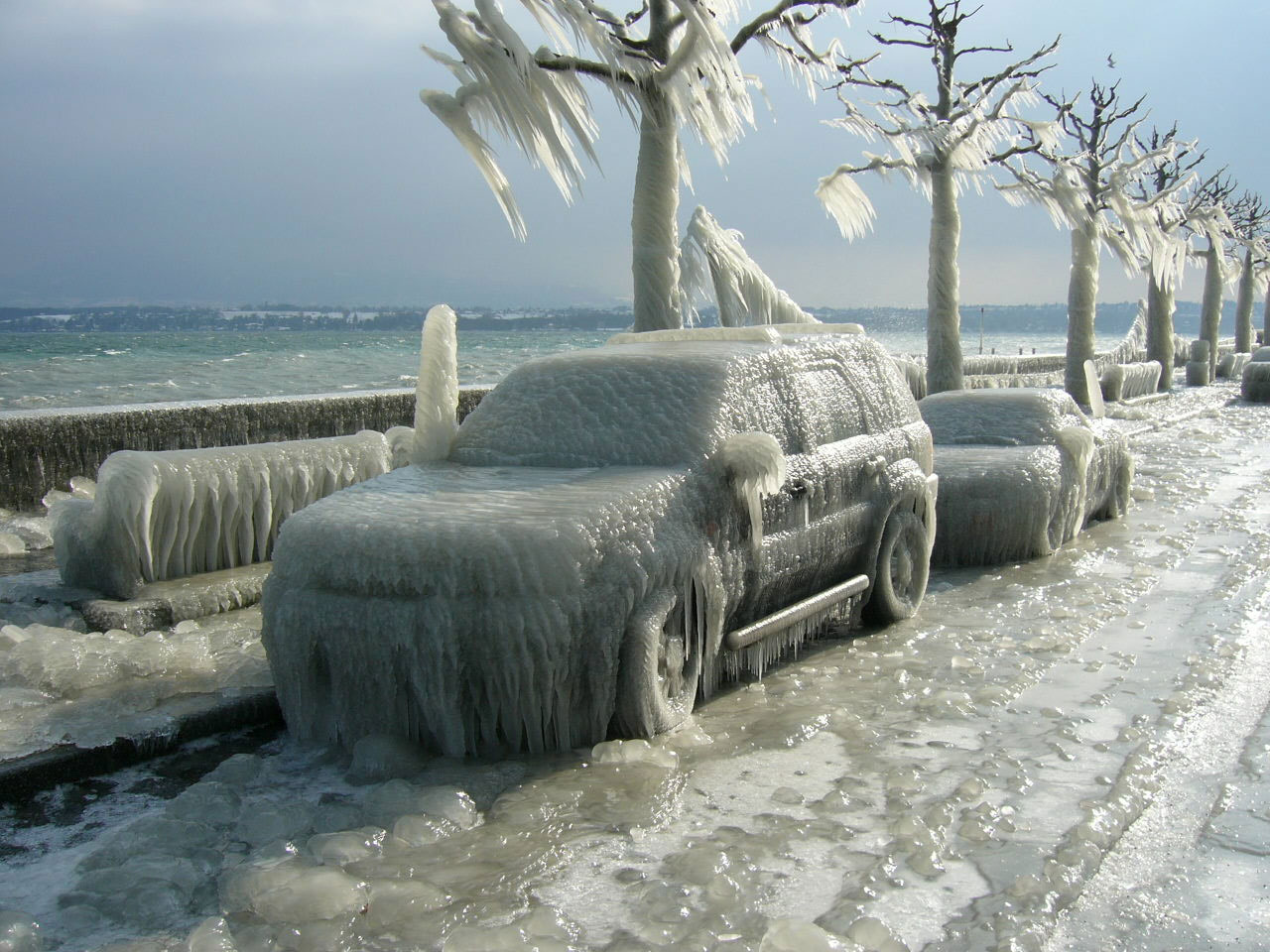



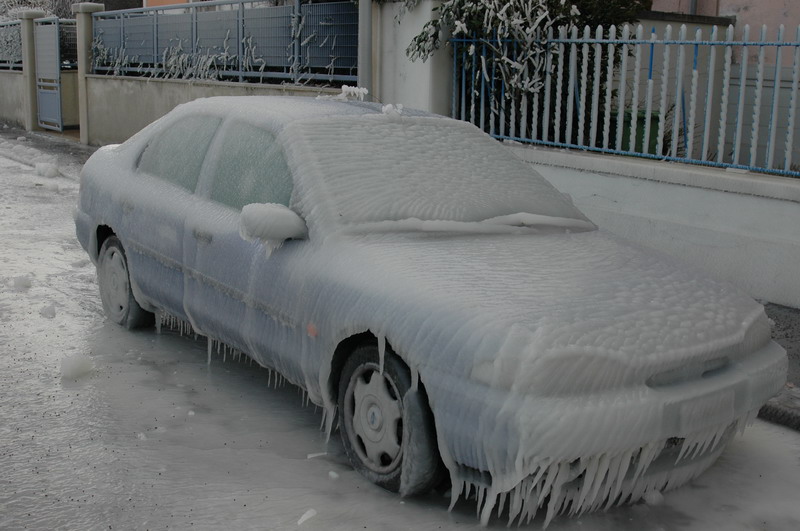






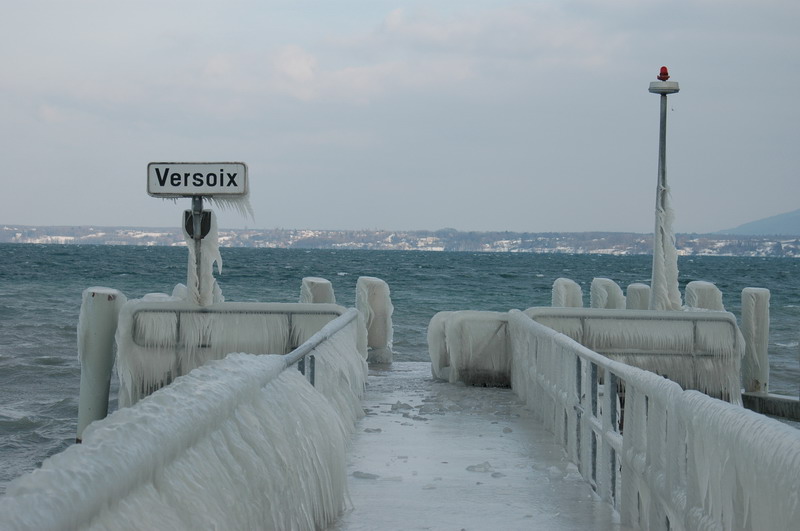
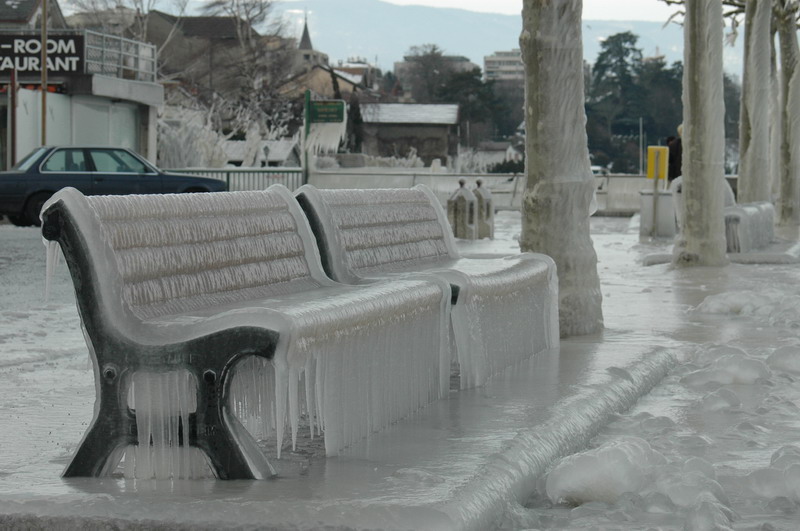

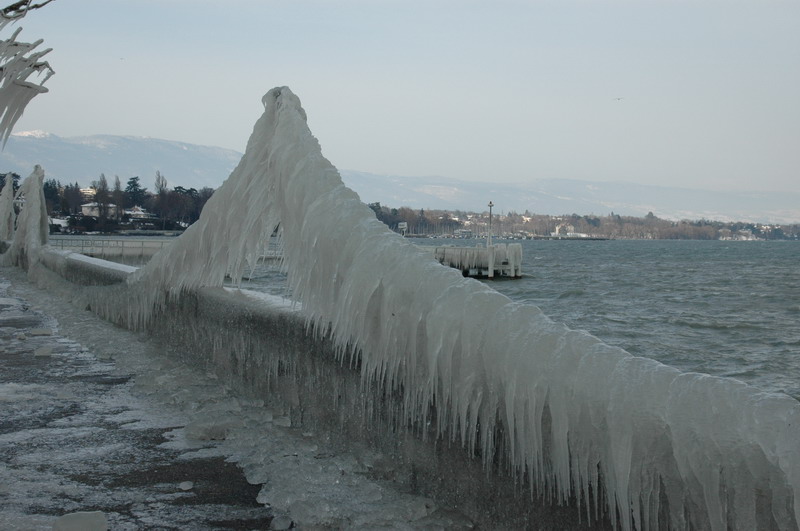
Posted by Brian Borden at 12:46 AM 1 comments
Labels: Interesting, Photography, Science
The Toast Song
And here is the Toast song I also tried to describe. Again, its by Heywood Banks as he performed on the Bob and Tom radio show.
Now that you have heard it, go to YouTube and search for the "toast song" to see how popular it is. Yeah Toast!
Posted by Brian Borden at 12:21 AM 0 comments
Labels: Entertainment, Humorous, Music
18 Wheels on a Big Rig
Here is a video of the hilarious song "18 Wheels on a Big Rig."
The song is by Heywood Banks as he performed it on the Bob and Tom radio show.
I have talked with several people who have never heard this so here's your chance to actually hear the song rather than my pitiful description of it. Enjoy!
Posted by Brian Borden at 12:16 AM 0 comments
Labels: Entertainment, Humorous, Music
Tips on Consolidating Credit Card Debt
Here are a few good tips from soundmoneytips.com on what to look out for when consolidating credit card debt. Keep in mind that the point of this article is to lower and keep low your credit card debt. It is not about how to increase your credit score. Tip 5 may actually reduce your credit score. Overall, these are good tips.
Tips on Consolidating Credit Card Debt
From Soundmoneytips.com
Credit card debt is the number one financial problem of Americans today. The average household has a credit card balance of about US$8,000 over multiple credit cards and store cards. This balance is at its highest after the holidays, when most of us have racked up major credit card bills on gifts. If you are carrying one too many big balances, there are some things you can do to lower your debt. Be sure to consult our Sound Money Tips Guide to Credit Cards for answers to all your credit card queries.
Meantime, the most common form of credit card debt consolidation is to transfer the balance of all your credit cards onto one card with the lowest interest rate. This can save you thousands because APRs (Annual Percentage Rates) that are 12%-24% can get reduced to 10%, 8%, 6% or even 0% - and consolidating has the added bonus of combining all your payments into one easy, fixed monthly sum. Still, there are lots of “fine print” traps. Look out for these top tricks of the credit card consolidation trade:
1.Balance-transfer Fees – Some issuers charge transaction fees as high as 4 percent for balance transfers so that the higher the balance, the higher the transaction fee. Other credit card companies cap transfer fees at $25-50. Still other cards only waive fees for "initial balance transfers," then treat every subsequent balance transfer as a cash advance and charge the greater of $2.50 or 2.5% of the transaction amount as a fee.
2. Teaser Rates - Be sure to ask how long the introductory rate lasts, and find out
what the card's annual percentage rate is after that teaser rate expires. If possible, it’s best to focus on paying down the transferred balance before the teaser rate expires. Does the teaser rate apply to transferred balances or new purchases or both? And last but not least, do you qualify for the super low-rate? While an offer may boast a 3.9 percent teaser rate that bumps up to 17 percent after six months, a person may only qualify for a card with 7.9 percent teaser and a regular annual percentage rate of 21 percent.
3. Late Payment Problems – It may only take one slip-up for that super-low rate to disappear. For example, you may start with a 9.99 APR, but one tardy payment bumps the rate up to 21.99. What about late fees and over-the-limit fees? Does that card have an annual fee?
4. Double Check - The new card company may send a notice saying the balance transfer is complete. But be sure to call the old card company to verify this. The old company should send a billing statement with a zero balance. If they don’t, request it.
5. Cancel Old Card(s) - First off, plenty of people out there have trouble avoiding the temptation of an open credit line. Second, too many open lines of credit can affect a person's ability to qualify for a mortgage or a car loan. Lenders view any open credit lines on all unused credit cards sitting in a consumer's wallet as potential outstanding debt.
6. Stick With It - Consumer experts urge people who transfer balances to a low-rate card to stick around for a year or more. If you jump from card to card you can’t build a credit history, and that can really damage your credit.
Posted by Brian Borden at 12:06 AM 0 comments
Labels: Financial Planning
Wednesday, February 07, 2007
Say Cheese

The First Photo From Space
In 1946, rocket-borne cameras gave us our first look at Earth from beyond the atmosphere.
From Air&Space
By Tony Reichhardt
On October 24, 1946, not long after the end of World War II and years before the Sputnik satellite opened the space age, a group of soldiers and scientists in the New Mexico desert saw something new and wonderful—the first pictures of Earth as seen from space.
The grainy, black-and-white photos were taken from an altitude of 65 miles by a 35-millimeter motion picture camera riding on a V-2 missile launched from the White Sands Missile Range. Snapping a new frame every second and a half, the rocket-borne camera climbed straight up, then fell back to Earth minutes later, slamming into the ground at 500 feet per second. The camera itself was smashed, but the film, protected in a steel cassette, was unharmed.
Fred Rulli was a 19-year-old enlisted man assigned to the recovery team that drove into the desert to retrieve film from those early V-2 shots. When the scientists found the cassette in good shape, he recalls, "They were ecstatic, they were jumping up and down like kids." Later, back at the launch site, "when they first projected [the photos] onto the screen, the scientists just went nuts."
Before 1946, the highest pictures ever taken of the Earth’s surface were from the Explorer II balloon, which had ascended 13.7 miles in 1935, high enough to discern the curvature of the Earth. The V-2 cameras reached more than five times that altitude, where they clearly showed the planet set against the blackness of space. When the movie frames were stitched together, the panoramas covered a million square miles or more at a single glance. As Clyde Holliday, the engineer who developed the camera, wrote in National Geographic in 1950, the V-2 photos showed for the first time "how our Earth would look to visitors from another planet coming in on a space ship."
It was one of many firsts for the V-2 research program of the late 1940s, during which the Army fired dozens of captured German missiles brought to White Sands in 300 railroad cars at the end of the war. While the missileers used the V-2s to refine their own rocket designs, scientists were invited to pack instruments inside the nosecone to study temperatures, pressures, magnetic fields and other physical characteristics of the unexplored upper atmosphere.
Holliday worked for the Johns Hopkins University Applied Physics Laboratory (APL), alongside pioneering space scientists like James Van Allen and S. Fred Singer, both of whom would later be involved in planning the first U.S. satellites. Singer—better known today as a dogged skeptic of global warming with the Science and Environmental Policy Project in Arlington, Virginia—would analyze the photos that came back from the V-2 cameras to determine the rocket’s orientation to the Earth, a job he remembers as "quite difficult." The missile engineers needed to know how the rocket was steering through the upper atmosphere, and the scientists wanted to determine from which direction cosmic rays hitting their instruments were coming. Hardly anyone was interested in what the pictures revealed about geography or meteorology, at least not at first. "We considered clouds to be a nuisance," says Singer.
But Holliday, an instrument specialist at APL, well understood the importance of the photos for the study of Earth. Cy O’Brien, who worked in the lab’s public affairs office beginning in 1950, says Holliday was "in an environment with super-Ph.D.s, and he wanted to make clear that photography was a science, too."
Advertisement
Holliday’s discussion of the photos therefore leaned toward the technical. In those days before Walt Disney and Collier’s magazine planted the idea of space exploration in the public imagination, he was even sparing with his use of the term "space." The V-2 photos, he wrote in 1950, were taken in "the little-known reaches of the upper air." Today, even though the definition is somewhat arbitrary, anything above 100 kilometers (62.5 miles) is considered space.
More than 1,000 Earth pictures were returned from V-2s between 1946 and 1950, from altitudes as high as 100 miles. The photos, showing huge expanses of the American southwest, appeared in newspapers and were scrutinized by scientists from the U.S. Weather Bureau. In his National Geographic article, Holliday offered a few predictions as to where it all might lead: "Results of these tests now are pointing to a time when cameras may be mounted on guided missiles for scouting enemy territory in war, mapping inaccessible regions of the earth in peacetime, and even photographing cloud formations, storm fronts, and overcast areas over an entire continent in a few hours." Going out on a limb, he speculated that "the entire land area of the globe might be mapped in this way."
Fred Rulli, the former member of the camera recovery team, now counts himself lucky to have been in the "select group" that saw the first pictures from space as they came in. At 19, it seemed to him like just another Army job. But he recalls a friend at White Sands, another soldier—60 years later he’s forgotten his name—who was more alive to the future unfolding in front of them. Pointing to the rockets, the scientists and the clear New Mexico sky, the friend would turn to Rulli and say with amazement, "Do you realize what’s going on here?"
Posted by Brian Borden at 11:57 PM 0 comments
Labels: Space




